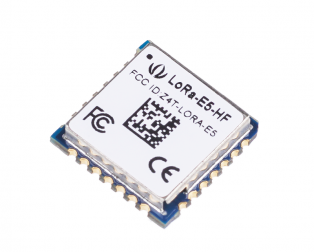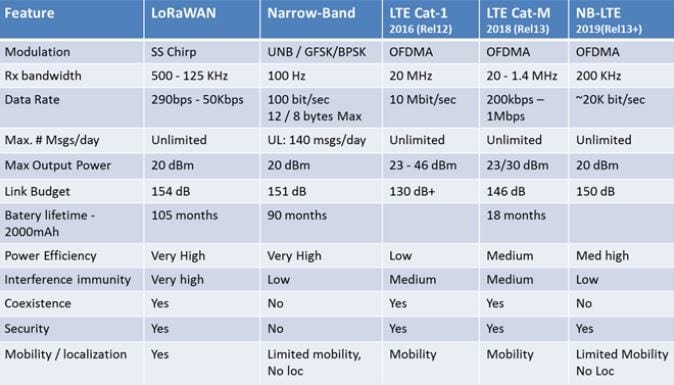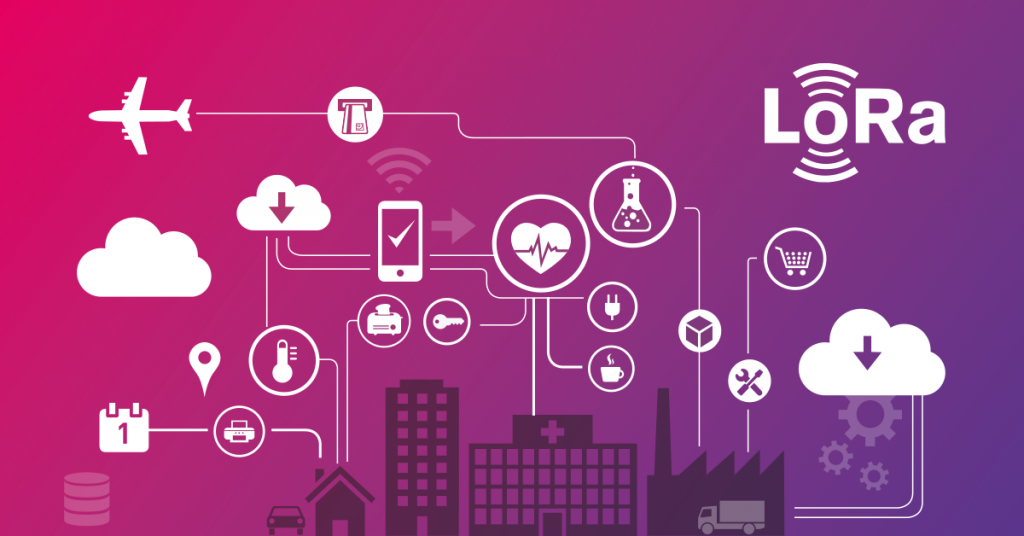What is LoRa?
You might have heard about the LoRa while studying some IoT stuff, but do you know what exactly the LoRa technology is, how it works? In today’s topic, we will cover all these things.

While searching the most important IoT technology, I found that the LoRa comes under the top 10 technology. But what makes this technology so important? You might hear about a LoRa while working on some IoT projects.
The question might come into your mind, What is LoRa? What is LoRaWAN? and what is the difference between LoRa and LoRaWAN? Today we will clear all the doubts in this blog.
Introduction to LoRa
The name LoRa came from LO- long, RA- range. In the growing area of IoT (Internet of Things), LoRa plays a very important technology. It is a Low-power Wide Area Network (LPWAN) modulation technique.

This wireless technology is developed and patented by Semtech technology and deals with only the physical layer of the OSI reference module. It utilizes a spread spectrum modulation in the Sub-GHz band to enable long-range (greater than 15 km) coverage, low power consumption (up to 10 years battery power), high network capacity (up to 1 million nodes), robust communication, and localization capability.
LoRa technique used CSS (chirp spread spectrum) modulation technique. It is one of the Low- power and long-range communication methods for M2M and IoT applications.
Why LoRa?
Let's take an example, you have a big farm, and you want to measure the humidity of the soil for every corner of the farm, So you make a setup of several numbers of sensors on every 800 meters of area.
Your farm is 15km away from your home. Considering the range of communication, you may select the GSM technology for getting the humidity value of your farm. But if you are going to implement this technology at multiple nodes, the system in the farm will consume more power.
As cellular wan consumes more power, you have to make a battery charging provision for this system. Don't you agree? How often you charge your mobile? I charge my mobile daily.

Instead of this, if you use the LoRa module for the 15 km range, it will consume very little power than you can use 18650 cells for few months. It is that much convenient in terms of power and connectivity.
Most of the communication areas like Zigbee, Wi-Fi, Bluetooth have a very short range of communication. So if you want to monitor your farm, which is probably 12- 25 km away from your home, Lo-Ra is the best option for getting the data over the internet.
The reason behind getting such a long-range of communication is its narrow bandwidth. What happens in the communication protocols like Zigbee, Bluetooth, and Wi-Fi, etc.
They have wider bandwidth to transfer data. That's why the communication range gets shorter. That's the reason why they can not communicate after few meters of range.
It is one of the advantages of Lo- Ra. When you want to send data over a long range, it is the most significant device. It is because it consumes very Low-power for transmitting the data.
Specification of LoRa
Following are the specifications of the LoRa module:
- Frequency band uses: 433, 868, 915 Mhz
- Mode of Communication: Half-duplex SPI communication
- Frequency Width: from 300 bps to 125 kbps
- Standard: IEEE 802.15.4g
- Modulation: Spread spectrum modulation type based on FM pulses which vary (Eg. FSK,GFSK,MSK,GMSK, LoRa)
- Communication is natively bidirectional and unlimited (to ISM band local regulations)
- Wide offer in gateways: macro-gateways, pico-gateways for in-home usage, indoor gateways.
- Lo-Ra wireless modules also support sensors with serial interface (I2C, UART, SDI-12)
- Lo-Ra physical Layer: Frequency, power, modulation, and signaling between nodes and gateways
- one LoRa networks can connect thousands of nodes
Here in the below image, we added the comparison of Lora with other technologies.

How LoRa works?
The LoRa technology-based devices have a modem that communicates locally with central process modules called gateways. It is just the same as your phone uses a cell tower to send and receive information. A gateway is a node between the sensor and the server.
The network server communicates with the gateway via the internet and will tell how to interact with the sensor. It works on a spread spectrum modulation technique. This modulation technique is derived from the chirp spread spectrum.
Communication Method Used in LoRa
LoRa communication is based on spread spectrum modulation. It is derived from the chirp spread spectrum.
CSS(Chirp spread spectrum) modulation techniques have low power characteristics like FSK modulation, which can be used for long-range communication.
What is Chirp Spread Spectrum?
CSS(Chirp spread spectrum) is a technique that uses wideband linear frequency chirp pulses to encode the data. A chirp is a sinewave signal whose frequency is increases or decreases over time. Its digital circuit consists of a modulator containing an encoder and interleaver.
The encoder converter data into different formats using a gray code converter. Gray code conversion supports the error correction by assigning each successive bit a sequential code word that varies by a single bit.
It gives contribution to long-range coherence to the system. The gray coded bits go through the filter and amplifier before it goes to the 'I' and 'Q' mixer, at which the data is mixed with the carrier frequency.
The Gray-coded data modulate the carrier signal to create chirps that maintain constant amplitude. But it varies in frequency from a within-band starting frequency to either an up or down ending frequency and has both 'I' and 'Q' components.
The frequency variation from chirp to chirp results in an effective counter against interference, frequency hopping. It helps the LoRa waveform maintain coherence over long ranges. The wideband spread spectrum modulation also allows the transmitter to use less power than narrowband modulation.
The resulting signals sent the mixers and go through a power amplifier, T/R switch, matching network, and antenna.
These things make this modulation technique effective and support low power, low data rate, and coherent long-range communications.
Difference between LoRa and LoRa-WAN
Before reading and studying details about Lo-Ra, I was considering Lo-Ra and LoRaWAN are the same, but they are not.
LoRa
Lo-Ra is a communication method used to transmit radio signals over a chirp spread spectrum technique. It's a proprietary system made by chip manufacturer Semtech.
This radio chip works on a standard ISM band that uses Lo-Ra, which converts frequency to bits. Thus, it does not have any need to write a code to implement a radio system. In short, Lo-Ra is a lower-level physical layer technology that can use in a wide area of network application.
LoRaWAN
LoRaWAN is a point-to-multipoint networking protocol.It uses Semtech’s LoRa modulation scheme. LoRaWAN is a standard developed by the non-profit organization LoRa AllianceTM. It’s not just about the radio waves; it’s about how the radio waves communicate with LoRaWAN gateways to do things like encryption and identification.
It also includes cloud components that will connect to multiple gateways of LoRaWAN.
Advantages and Disadvantages
Advantages
- It provides long-range communication( can extend up to 100km). It is one of the biggest advantages and reasons for using the LoRa module.
- LoRa modules use very low power, which means a 18650 cell can also run up to one year.
Disadvantages
- It has lower bandwidth. You can not send a large amount of data at a time.
- The lower data rate means you can only send sensor signals; you can not stream a video with this bandwidth.
Applications
Where can we use the LoRa module and LoRaWAN:
- In facility management:
Lighting automation
Air conditioning
Temperature measurement
Energy Measuring
Presence Detection - Healthcare applications:
Pressure Monitoring
Gas level Monitoring
Cylinder Location
Refrigerated storage temperature control - Factories and Industrial applications:
Pressure Monitoring
Gas Level Monitoring
Tank and cylinder location - Airport service Management:
Glycol Level Monitoring
Runway Temperature Measurement
Energy Efficiency Monitoring
Glass vibration measurement while takeoff
Conclusion
From the above information, it has been concluded that if you want to send less data but at a long distance, then the LoRa module is a good choice for communication. It also provides security at high-end encryption means data can not be read easily by other parties.

The main purpose of LoRa is to connect the maximum number of sensors that are integrated with architecture-specific to IoT. I am thankful to you for reading this article completely. Please let me know if you have any doubt related to any LoRa module.






